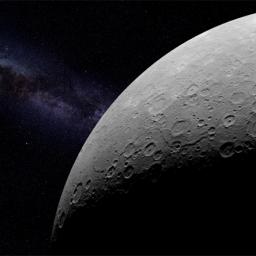Planet Mercury is Slowly Shrinking
 According to a research published by Nature Geoscience, but not yet online, the planet "Mercury shrunk by more than 7 kilometers in radius over past 4 billion years". Using analysis of NASA's Messenger probe , researchers at the Carnegie Institution for Science say the planet lost seven kilometers (more than four miles) of elevation in some areas, over the course of four billion years. Scientists first suggested the phenomenon in the mid-1970s, when the Mariner 10 probe passed the planet in three flybys.
According to a research published by Nature Geoscience, but not yet online, the planet "Mercury shrunk by more than 7 kilometers in radius over past 4 billion years". Using analysis of NASA's Messenger probe , researchers at the Carnegie Institution for Science say the planet lost seven kilometers (more than four miles) of elevation in some areas, over the course of four billion years. Scientists first suggested the phenomenon in the mid-1970s, when the Mariner 10 probe passed the planet in three flybys.